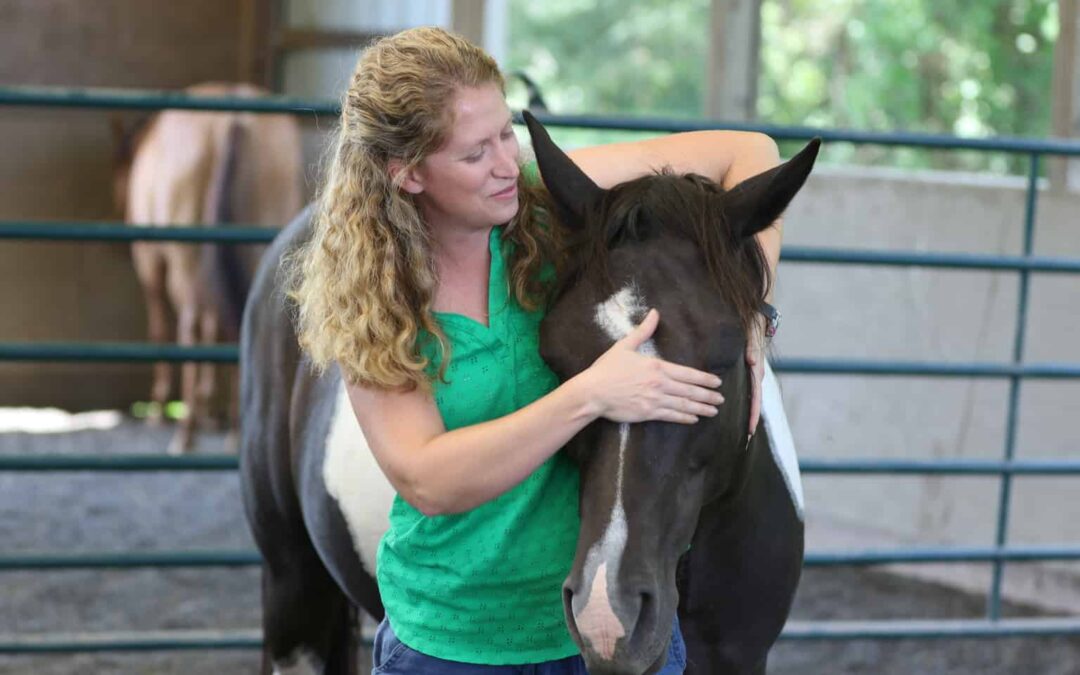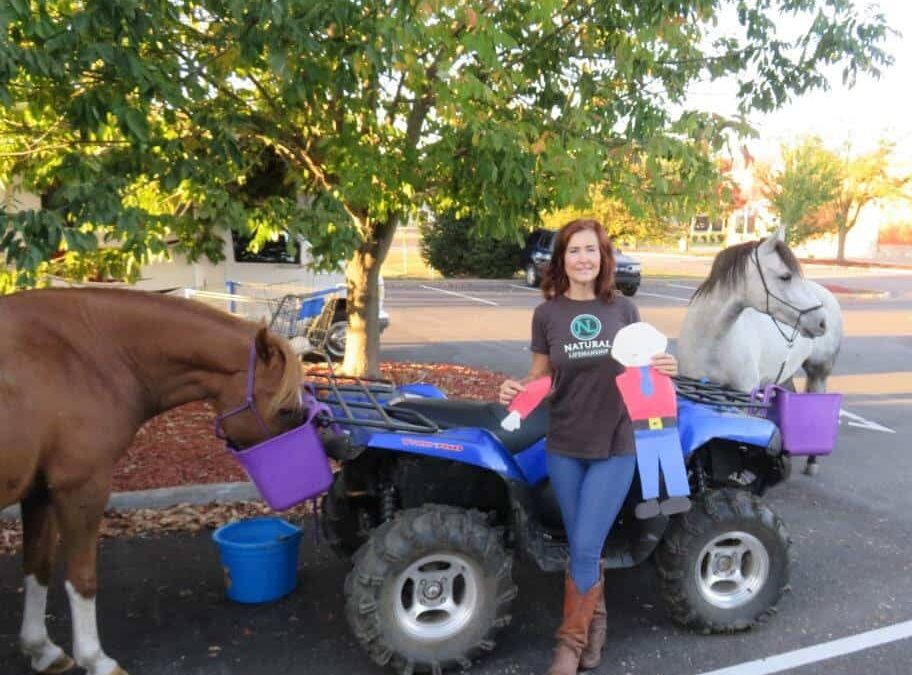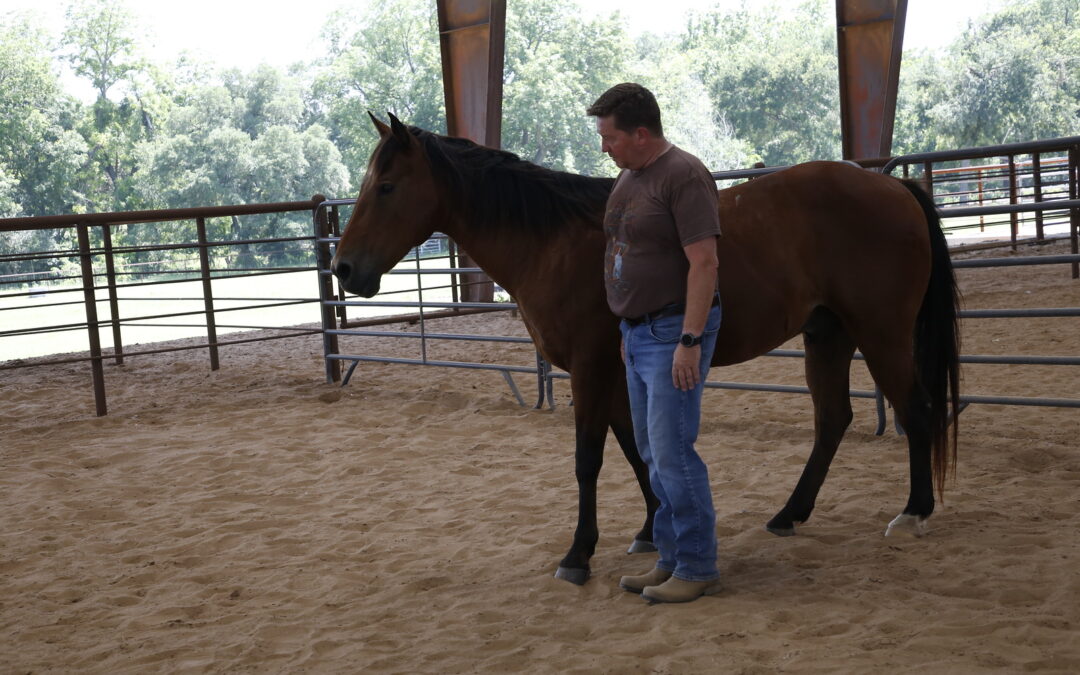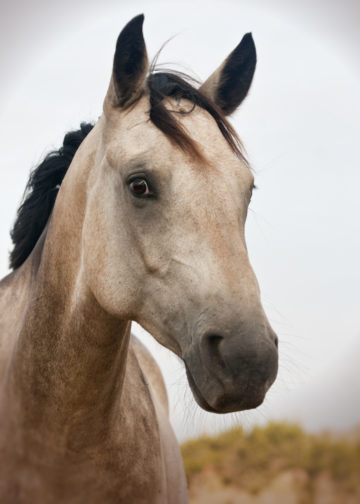Co-authored by Rebecca J. Hubbard & Reccia Jobe with Pecan Creek Ranch
Mental health professionals are taught to create a safe place for their clients, so clients can feel comfortable being themselves while discussing and exploring their experiences. Creating a safe place is a central tenant and an imperative part of the therapeutic process. It does, however, have a potential negative impact particularly for clients who have histories of complex trauma. The long term pitfall of clinicians being the generator of a safe place is that feeling of safety doesn’t go with the clients when they leave the session. Since the safe space is generated by the clinician, clients do not know how to establish it in their own lives.
Being safe is an important part of healing. But we are not being as effective as we need to be if the only place a client feels safe is in our offices. What if we changed our approach? What if we initially created a safe place then shifted toward creating a brave space?
A brave space is a place where clients can make mistakes without fear of being shamed, humiliated, teased or punished. Where they can try new things, take appropriate risks, and understand that there are unlimited ways to do whatever they are trying to accomplish. Creating this type of environment assists clients in developing within themselves their own safe place from which to grow. If we change our focus from only creating safe spaces to creating safe and brave spaces, then clients are able to take from the experience what they need in their lives and grow safe places within themselves.
Creating Brave Spaces
The components of a brave space are not all that different from the components of a safe place. The difference is in the doing. The components are a recursive feedback loop that generates more and more opportunities for being brave.
Essential Components of a Brave Space
You Are Welcome Here
It is common for people to create a welcoming physical space or atmosphere but they forget about the welcoming of spirit, body, and mind. In order to create the essence, all of you is welcome here, a clinician must mindfully create within their body, spirit, and mind a deep sense of welcome. A friend and colleague, Patricia Van Horn, Ph.D., said, “Who you are is just as important as what you do” in the therapeutic process. In the welcome is the belief that clients are fully capable of learning how to be effective and healthy in this world.
Be Authentic/Genuine and Encourage Authenticity/Genuineness
Many years ago, clinicians were trained to offer to their clients a “tabula rasa,” a blank slate, for clients to paint upon whatever they wished. Some schools of thought still prescribe to this way of being in the therapeutic relationship. We have found that it is important to be authentic in the therapeutic relationship in order to create the kind of environment we want for growth and change. Being authentic means clinicians experience emotions, own their emotions, apologize when they are wrong or have been hurtful, ask for and engage in “do-overs” and show genuine feelings for clients. We believe that clinicians also must do their own work on having healthy relationships and working in a brave space. We feel it is not fair or appropriate to ask clients to do something their clinician has not done or is unwilling to do.
Encouraging clients to be their authentic selves and to be genuine is a moment by moment endeavor that must be approached with compassion and welcoming. Allowing the client to express genuine thoughts and emotions is important and sometimes difficult. Since most clients are just starting with this process, the sharing of their feelings and thoughts can be harsh. Remembering to see this process through the lens of positive intent is important so that you can respond in ways that are helpful to the client on their journey of being authentic and genuine. When clients are able to be their authentic-selves, further integration and healing occur.
Be Vulnerable and Encourage Vulnerability
No one really likes being vulnerable. This openness with another creates fear of rejection, and of being hurt. In order to work in a brave space, clients must be vulnerable. Clinicians should not ask a client to be vulnerable when they are unwilling to do so themselves. Vulnerability fosters connection and compassion. An excellent way to be vulnerable is to show your humanness by admitting to your mistakes and asking for “do-overs.”
Sometimes it is appropriate to share a brief experience of when you struggled in order to humanize clients’ experiences. It is important that these disclosures be brief, accessible and meaningful to clients. It is important that these disclosures contribute to the work that is occurring and do not detract from it. This is a difficult balance because too much self-disclosure not only derails the therapy but negatively impacts the therapeutic relationship. If self-disclosure is about you and not the client, then it is not appropriate to disclose. When done well self-disclosure produces the feeling of we are in this together.
Hold with Compassion
Of course, none of these components would be helpful if we shame or punish ourselves or our clients for actions, behaviors or beliefs. In order to be free to try new things, there must be an environment of compassion and curiosity in which understanding is sought for how an action or a series of actions impact relationship with self and others. Having a compassionate-curious stance provides the opportunity to carefully examine actions, behaviors, and beliefs in a non-threatening manner that allows for the possibility of new understanding, a different perspective and alternative actions that improve our relationships with self and others and that shed the cloak of shame that suffocates so many.
Create Meaningful Connection
Clinicians are taught to develop rapport, to make connections with clients. Making a connection with clients is fundamental to the therapy process. There are many layers to a connection. Meeting clients where they are and developing a connection that is meaningful for clients is the foundation for them being able to connect with themselves. When clients make a deep connection with their mind, body, and spirit they are able to be self-compassionate. Having compassion for oneself allows for deeper connection and compassion for others. Allowing for and using the strength of clients’ spiritual practices is another way to foster connections. Spiritual practices that encourage disconnection, and are punishing make it challenging for clients to develop self-compassion.
A Million Other Ways
Many people believe that there are only a few “right” ways to do something. This belief contributes to self-judgment and shame. It stifles creativity and problem-solving ability, leading to powerlessness and an external locus of control. It removes the ability to learn how to take appropriate risk. At its most dangerous this belief causes us to become immobilized with fear and overcome with depression. It ceases our growth. Helping people understand that there are unlimited ways to do something frees them up to be themselves, to think outside of the box and to take risks that help them grow. It allows them to connect their exploration of who I am or who I want to be with what I need to do in order to achieve that.
Thinking this way is difficult because most of us were taught that there are right and wrong ways to do something. Focusing on whether something is working for clients, and whether it is good for the relationship to self and others is more helpful than determining whether or not what they did was “right.” Natural Lifemanship teaches that if it is not good for one person in the relationship then it is not good for either person in the relationship.
When clients are fearful of trying and ask how to do something, reminding clients that there is no right way is a powerful value and often frees them to try. “Mistakes” and “failures” are viewed as information received about what worked and what did not work and this information contributes to the next attempt.
What if clients ask for help? It is important to ask clients to try their best before interfering by helping. If after trying with some trial and error, clients still request help, an inquiry can be made into what type of help they want or need. Help can then be given as clients direct. Usually, when people dismiss the idea that there is one right way and they actually try, they are successful. The more clients are given the opportunity to figure things out on their own and do it their way, the more they try to do things and the more powerful they feel about decisions in their lives.
Connect to the Body & Practice Exercising Good Decision Making
Clients who have experienced repeated abuse are more likely to be re-victimized. There are many ways to think about why this may occur. One idea is when individuals experience repeated abuse by a loved one, they often have to push down or ignore their alarm system in order to maintain the relationship. Years of ignoring the body’s response disconnect clients from the physiological responses of their bodies’ assessment of threat making it very difficult for them to recognize situations that are unsafe. All the clues we use to determine whether a situation is safe or dangerous have either become confused or silenced because the system was overridden time and time again, eventually producing a dissociated system.
Helping clients reconnect to their bodies and alarm systems by recognizing what their bodies are doing in response to specific situations, and helping them learn how to interpret that information correctly is vital for their future safety. Then, practicing making a decision that is protective and healthy for themselves and acting on that information in a way that is good for their relationship with themselves and ultimately with others. As they learn how to connect, read their own signals and respond in a healthy, protective manner for themselves, their safety increases and their relationships become healthier too.
Do (Practice Practice Practice)
It is not enough to talk about being brave or to tell people there are unlimited ways to do things. Clinicians must be able to give clients opportunities to practice this value and to see for themselves that there are indeed unlimited ways to accomplish a task. This allows clients to learn to take appropriate risks. It is important to allow clients to struggle while monitoring their window of tolerance. Allowing for struggle gives the opportunity for clients to overcome and to own their own power. Being fully present while clients struggle offers tremendous, genuine support and a powerful quality of being deeply seen.
Many clinicians are uncomfortable allowing clients to struggle because this feels like allowing suffering. But it is much like the butterfly who beats his wings against the cocoon to get stronger. If the butterfly is freed from the cocoon rather than bursting out on his own, it dies. Clients need supportive struggle to get stronger too. When clients are allowed to struggle while receiving tremendous emotional support, they discover that within themselves they have a broken belief system (I am not smart enough. I am not good enough. I can’t do anything.) that must be repaired in order for them to be successful. Each success contributes to the healing of the belief system. It is important to scaffold tasks so that clients can be successful and have more of an opportunity to stay within their window of tolerance. The goal of doing is not perfection rather it is healing the broken belief system that frees clients to take control of their lives and develop healthier relationships with self, others and the world.
Helping clients understand that relationships are always more important than tasks (Natural Lifemanship principle) is a fundamental shift for most people. Most clients are more focused on the task at hand than on the relationship which can cause clients to make decisions when working on a task that negatively impact their relationship. When the value that relationship is more important than task is applied it strengthens their ability to have healthy relationships. When clients are practicing new skills clinicians help clients by identifying times when they are ignoring the relationship to complete the task which invariably is harmful to the relationship in the long term. It is a skill to be able to negotiate both the relationship and the task and it requires a great deal of practice. When clients practice new things and new ways of being, they are being brave. This feeling of bravery and the experience of being brave goes with them when they leave the office.
Create a Continual Learning Environment
In order to practice and have the freedom to try, to make mistakes, and to try something else, there has to be an environment of continual learning. This environment is fueled by curiosity, wonder, and excitement or anticipation for what will happen. No matter what happens it is noticed and folded back in to better understand the experience. An environment of continual learning creates an attitude of continual learning that, like a million ways, frees clients to try new things and to find their own answers.
In summary when a brave space is provided clients learn how to take the reins of their life and move forward in ways that are healthier for them.







Recent Comments